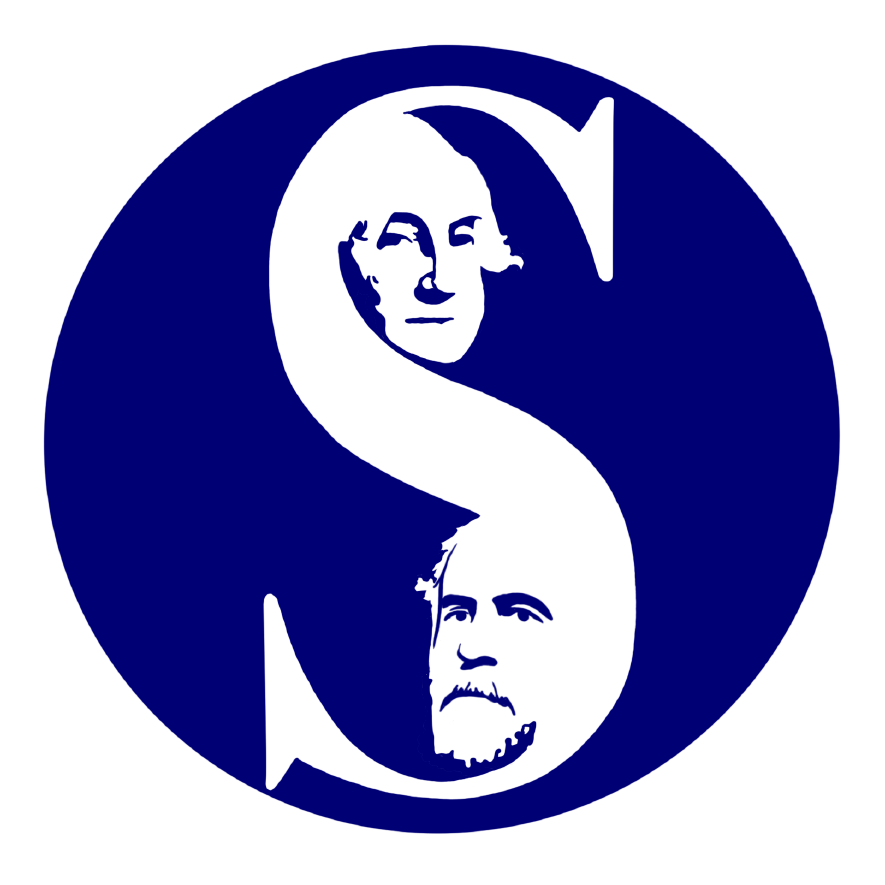VMI Hosts Debate on Controversial Monuments
VMI Hosts Debate on Controversial Monuments
Braver Angels debate discusses whether “oppressive” monuments should be removed.
(An opening speaker gives his perspective on the debate topic. | SOURCE: Author)
The prompt, “Resolved: Monuments that are perceived as symbols of oppression should be removed from public spaces,” was the topic for a Braver Angels debate held in Marshall Hall at Virginia Military Institute on February 4th, 2025.
The event functioned like a parliamentary debate, with affirmative speeches and negative speeches pertaining to the topic, and the opportunity to ask questions to the speakers. Attendees ranged in backgrounds, including students, professors, and other members of the Rockbridge County community. (Note: in accordance with debate rules, The W&L Spectator is omitting the identities or associations of anyone involved)
The first speaker argued the affirmative, contending that such monuments should be removed. He referenced Richmond writer John Mitchell, Jr., who stated in the 1890s that Confederate monuments glorified the Lost Cause narrative and left a “legacy of treason and blood.”
The next speaker argued that such monuments should not be removed from public spaces. He asserted that monuments have meanings that can constantly be changed, and that not all monuments glorify what they depict.
He used the example of the Robert E. Lee statue in Richmond that was graffitied during the Black Lives Matter protests of 2020 and was taken down in 2021. He stressed that the monument “could have served as a physical testament to social justice or the defeat of the Lost Cause” and to show the “social progress of the American movement.”
Illustrating how monuments are not always celebrations, he used the example of monuments at Auschwitz to show that the monuments there do not glorify the Holocaust tragedy.
In the same way, he stated, Confederate monuments could be used “to teach about the Civil War, teach about racial inequality, teach about the oppressive Confederacy, and how they were defeated.” He concluded by emphasizing that “the solution is all in how you present a monument” and that “instead of wiping the slate clean, we [should] keep these monumental tools to educate generations of future citizens.”
The final two opening speakers discussed the importance of context and how the decision to remove or not remove such monuments lies with the communities directly affected. One speaker recognized the importance of keeping the Richmond monuments, but stated that the Richmond community’s decision should be respected.
The other opening speaker referenced America’s diversity and how different values mean different communities will choose to have certain monuments. He stated that damaging this history “is counterproductive to the way that we conduct ourselves and our Republic.”
After the opening speeches, the debate floor was opened to the rest of the attendees. A notable speech that spoke on the affirmative side stressed the “oppressive” part of the debate resolution. The speaker opened her talk by claiming that statues of Robert E. Lee memorialize the horrific nature of American enslavement and atrocities that accompanied the practice.
She pivoted to discussing W&L’s history and what she described as the small proportion of black students on campus. She claimed that “black people were not allowed on our campus as students until 1975,” nor were women until 1985. She advocated for having those who feel oppressed decide what to do with the monuments. She claimed that leaving that decision to “the people who placed it [the monuments] there … is doing a disservice to the people who are actually being harmed by the issue.”
After she concluded her speech, a back-and-forth ensued between her and another attendee who challenged her claims about W&L’s history.
The man pointed to the example of John Chavis, a student of Liberty Hall Academy (which later became W&L), who the speaker claimed was the first known African American to receive a college degree in America. The man highlighted how there is a historical monument to John Chavis and a building named after him on campus. He told the speaker that it is untrue to claim that “there were no blacks on the campus of Washington and Lee University.”
Many more people gave brief speeches, largely echoing arguments that had been previously articulated by either side. Some speakers stressed the educational value of preserving monuments and the importance of giving the full narrative on controversial figures and topics.
One speaker used the example of Confederate General Stonewall Jackson, a large contributor to VMI’s development. The speaker claimed that “removing his statue only looks at the bad side [of Jackson]” and instead “we should be telling the good and the bad stuff, because the full context and the full historical analysis is what is truly important.”
Southern Virginia University is hosting another Braver Angels debate on March 18. The event is open to members of W&L community and will focus on “cancel-culture.”


